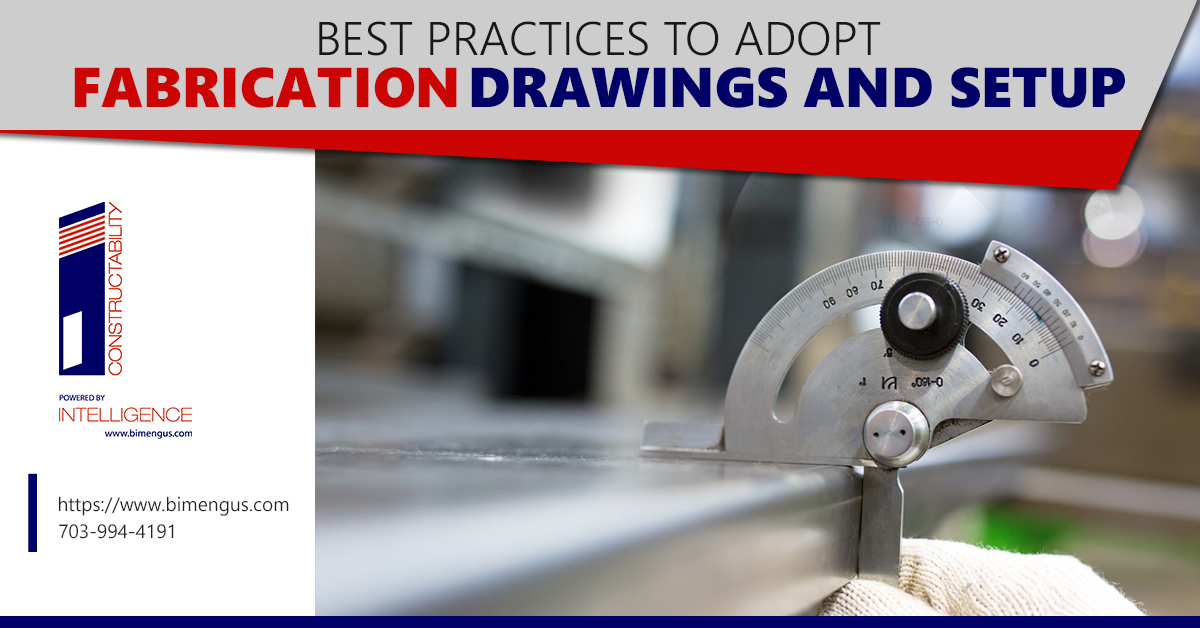Fabrication drawings play a crucial role in construction projects. Quality fabrication have the ability to make or break a construction project as it creates a serious impact on the workflow, budget, and timeline. Through the years, there has been a significant amount of confusion between construction drawings and fabrication drawings.
Making it easy to understand, a construction drawing shows a comprehensive structure of a building, and the way it is supposed to look in its real form. Whilst a fabrication drawing is element specific, it focuses on fabricating or manufacturing elements, and the way these elements have to be assembled on site.
Aim of a fabrication drawing
The three principle goals of fabrication drawings would be –
- Fabrication of individual building components for a specific purpose
- Understand their assembly on-site
- Installation of an element within a building or a structure
Types of Fabrication Drawings
- Single-part – prime focus on intricate details with information on dimensions, weights, etc.
- Assembly – prime focus on BOM and element finishing. Educates welding personnel on how parts should be joined.
- General – contains info on how all the elements get together at multiple drawing angles
There are various elements or components that do require fabrication drawings viz.
- HVAC assembly (Sheet metal, Duct Assembly, and more)
- Structural steel assemblies (Connections & Trusses)
- Doors, Windows, Concrete, etc.
Consequences of Poor Fabrication Drawings
- Substantial loss in budget
- Schedule delays
- Poor on-site safety
- Rework
- On-site waste
- Ill-assembly of a structure causing safety concerns
- Incorrect material requirements
To make the fabrication process accurate –
-the fabrication drawings need to be reviewed by a supervising manager
-full scope of the project needs to be identified through on-site visits
-attention to detail needs to performed
-fabrication drawings need to be sent to owners and senior project stakeholders
Moving forward it is important to understand why fabrication profiles or a fabrication database is important.
Profiles are defined as smaller fabrication databases from a larger database. The larger database can be defined as a Global Profile that is treated as the principal template.
The use of profiles keeps –
- Your global database clean and clutter-free – saves on rework and time
Mitigates the need to add –
- Service Templates
- Sheet Metal Specification
- Support Specifications
- Insulation Specifications
Or
- Copy, rename, and reassign project profile service templates
While working with profiles you can add Mapping accessories required for Revit without adding them in the global database
Global Database Vs Profile Database can be stated as –
Global Database –
- Airturn
- Ancillry
- BarCode
- COLOURS
- Connectr
- Cost
- Cutouts
- Damper
- Diameter
There are more parameters in the Global Database
As stated above, a profile is a subset of the Global Database, thus it does contain similar elements from the Global Database, and other parameters like-
- FTimes
- ISpecs
- Layers
- Leads
- Material
- Notches
- Resistance
- Resistlink
- Silencer
- Splitter…. & more
After a profile is created, certain parts of a database need to be altered viz.
- Service Templates
- Hanger Values
- Insulation Values
- Sheet Metal Values
- Sections
Setting up a fabrication setup in any of the software like CADmep, ESTmep, or CAMduct does require certain parameters or questions that need to be answered or cleared.
Costing data for sheet metal
- Internal costing
- Supplier costing
- Sheet Metal and Air Conditioning Contractors National Association (SMACNA)
Sheet Metal Details
- Fabrication Vs Bought
- Origin of material costs
- Origin of fabrication costs
- Origin of installation costs
Plumbing Details
- Origin of piping cost material
- Origin of fabrication cost
- Origin of installation cost
Conclusion
Understanding the challenges and solutions of creating fabrication drawings and elements creates a better understanding for Owners, Designers, and Fabricators to create an optimized workflow that renders fast project delivery based on time and budget, and eliminates rework and waste, whilst facilitating all-round project success.
